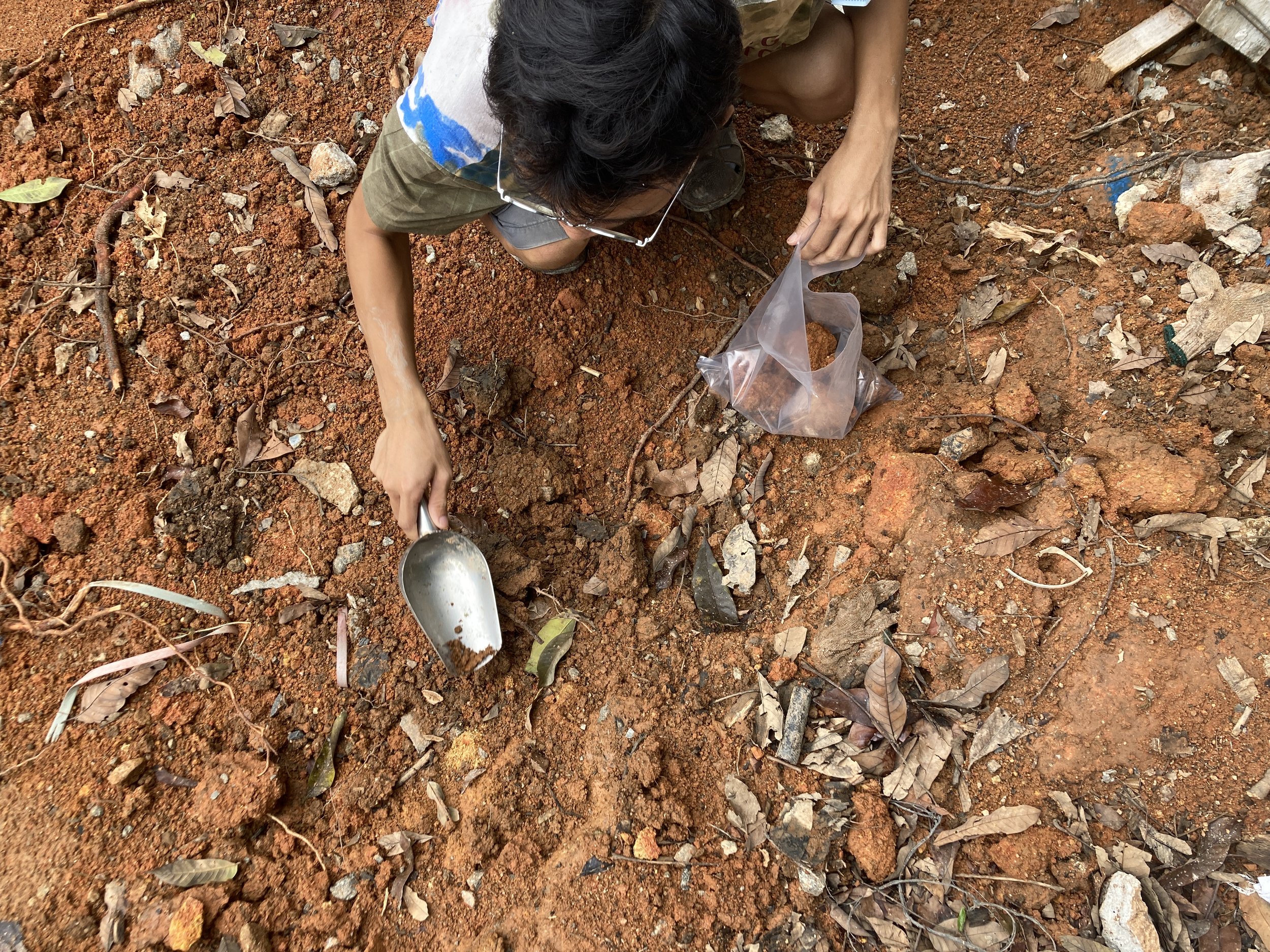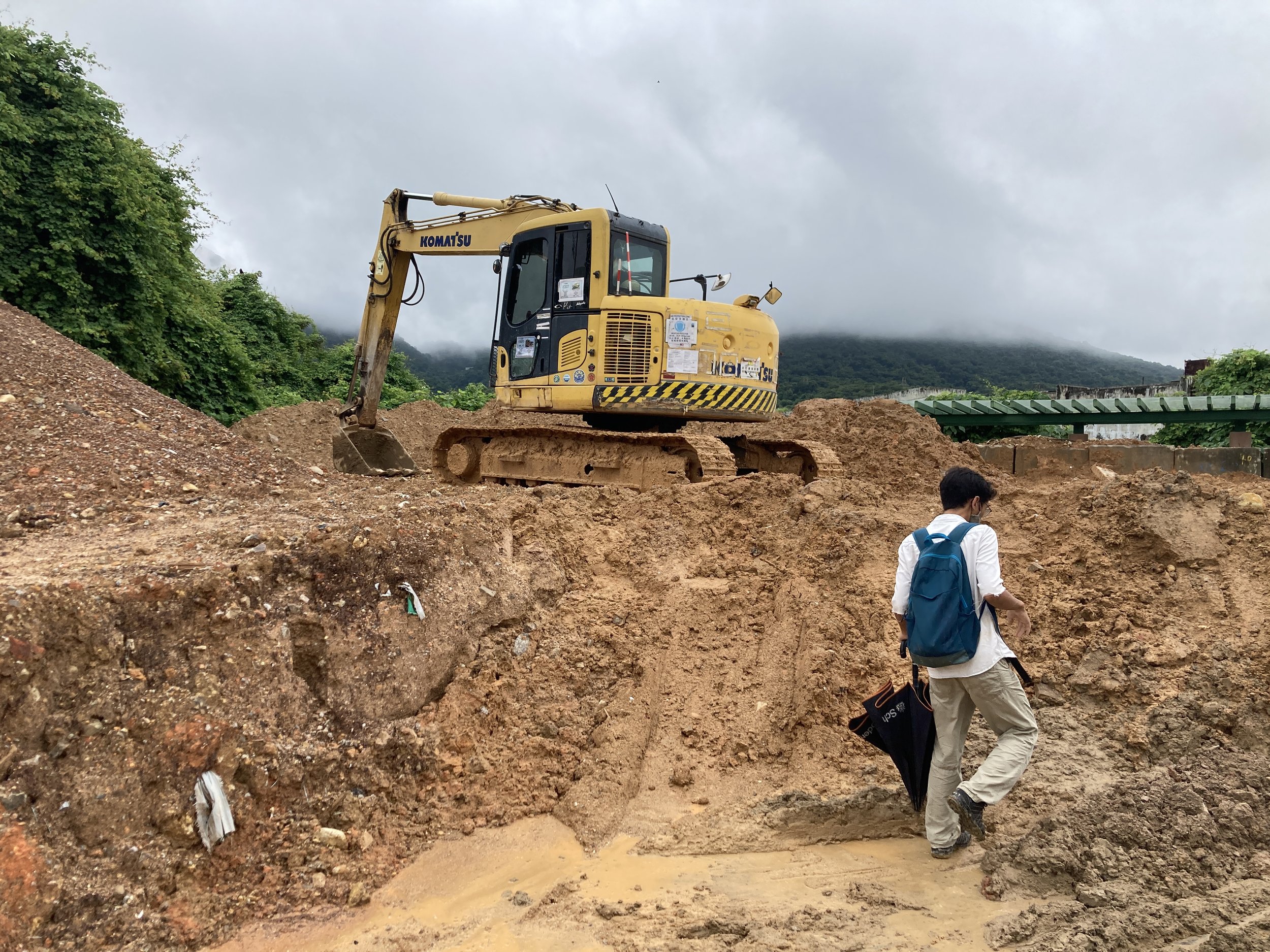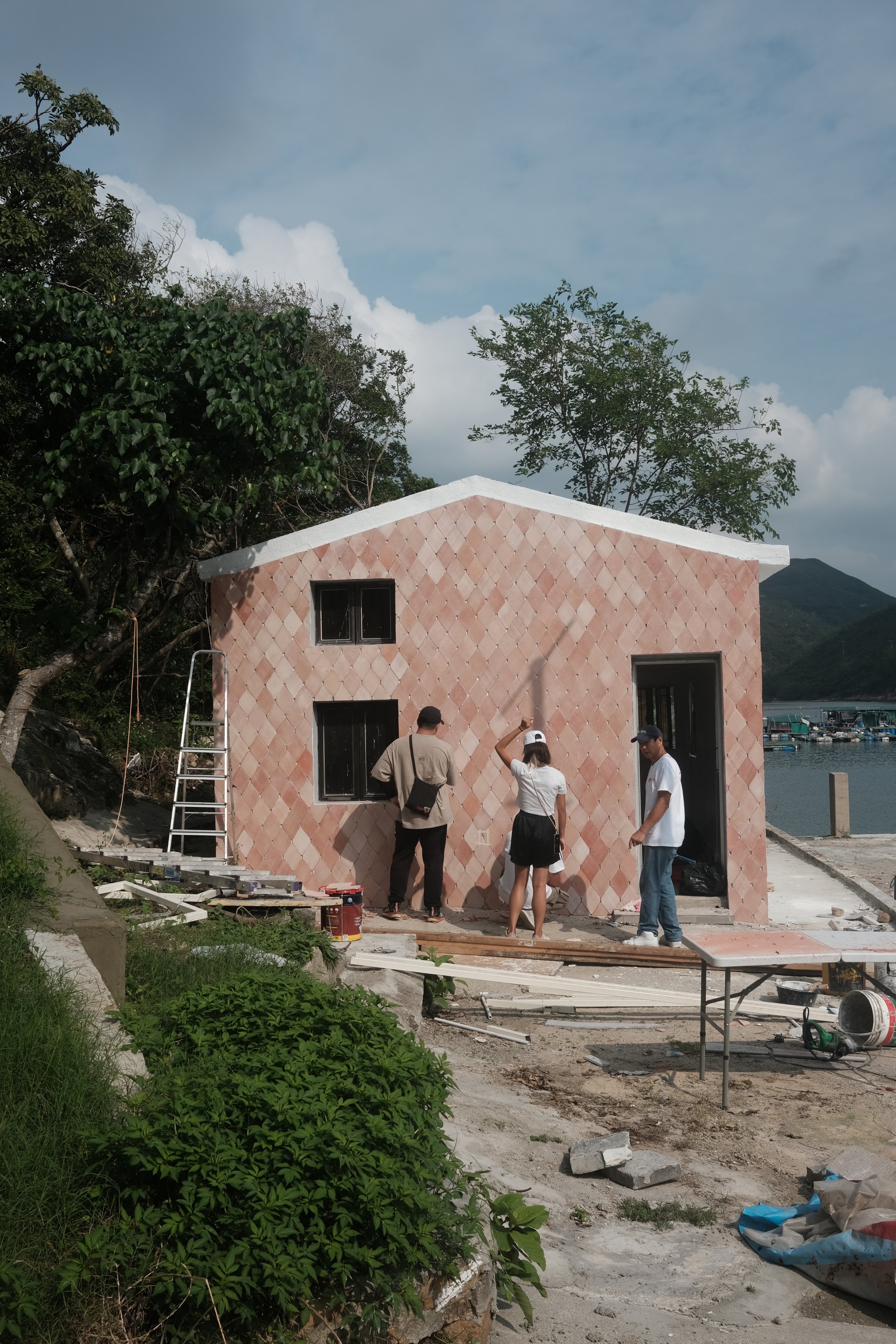
HONG KONG SOIL
8 min read
April, 2025
Soil
Change is a given in Hong Kong, and we are no stranger to its rhythm. Buildings rise and fall with remarkable speed, construction sites appear overnight, and scaffolding drape the cityscape like second skin. But when the pandemic brought the city to a sudden halt, it forced a different kind of reflection. With global supply chains disrupted and daily life confined, we were called to look closer at what’s around us.
It was during this time that we began to notice what had long been overlooked: the soil displaced by the city's endless cycle of construction. Every day, Hong Kong generates up to 49,000 tons of demolition materials. While about a third is recovered for reuse, the rest—an equivalent of 300 double-decker buses’ worth of surplus material—piles up in public fills. Among this waste, excavated soil, especially virgin soil free from contamination, holds enormous potential. Yet once it enters the landfill system and mixes with debris, it loses its purity—and with it, its potential.
Hong Kong Soil was born from this moment of reckoning: a call to rethink how we value the earth beneath our feet.
What if the resources we need have been here all along, waiting to be unearthed? What if reconnecting with the land is how we begin to rebuild our future?
From these questions, our work began. Since 2021, Hong Kong Soil has quietly taken on the challenge of recovering this overlooked material, with the goal of gaining insights on designing with earth, making with earth and living with earth. Partnering with government agencies, contractors, geologists, and dump truck drivers, we intercept clean soil before it disappears into landfill. From there, a careful process unfolds:
From Earth To Clay
01
02
Collect soil (Raw earth with organic materials)
Add water for easier sieving
03
Sieve out larger particles for a finer slurry
04
Dry the slurry
05
06
Slurry gets completely dried
Crush clay into powder
09
Pug clay with a pugmill
07
08
Knead into balls for pugging
Mix with other raw materials like feldspar/quartz
Each step is labor-intensive, requiring constant iteration—but it’s this slow, deliberate process that allows us to uncover how each soil wants to be shaped, how it responds to fire, and how it can be given new life. Built on relentless research and experimentation, it demands patience, resilience, and a willingness to fail—often.
In the early days, failure came quickly. Even the act of breaking down earth proved more challenging than expected. Before any local soil could be thrown, cast, or shaped, it had to be reduced to a fine powder. But at the time, our only tool was a manual tamper. We crushed rock-like clumps one by one—it was painstakingly slow, with hours of effort yielding barely a handful of usable material.
Then came a moment of hope: a kind friend gifted us a small, home-use impact crusher. We unboxed it like it was a miracle, tossed in a scoop of dry earth—and within seconds, a thick cloud of dust engulfed the village, like a scene from Interstellar. My phone rang. Neighbours complained. Everything came to a stop.
So we adapted. We built a makeshift tent using the blue-and-white tarp found across construction sites and market stalls in Hong Kong—an improvised shield to contain the dust and protect the village from another storm. We chose humid days, knowing the moisture in the air would help the particles settle. Inside the tent, we worked slowly, carefully, methodically. It was hot, repetitive, and physically demanding—but necessary. What began as a basic material task quickly became a choreography of constraints: climate, space, tools, time.
Even when everything goes right—when the weather cooperates, the setup holds, and the rhythm is steady—the yield is humbling.
One tonne of clay powder means: one full day of crushing, another day to build the tent, two weeks of sieving wet earth, and several more weeks of drying—just to create something we can finally begin to work with.
It was a reminder: progress is slow, but never wasted. In every failure, and in every handful of dust, the material taught us something. And over time, that persistence has taken shape in a growing body of work across different scales:
Our next step is to expand beyond small-scale applications. Not just objects, façades, or installations, but flooring, tiling, and architectural surfaces that carry the identity of a place—foundations for how we live, work, and gather.
So what if our major developers didn’t just build on the land—but built with it? Imagine a lobby finished with material sourced directly from the earth beneath it. Imagine cities where what we excavate becomes part of what we inhabit. This is true circularity—where progress and preservation move hand in hand.
At its core, Hong Kong Soil is not just about material recovery. It’s about reshaping our relationship with the land—moving from a mindset of extraction and waste to one of stewardship and imagination. We may not imagine a world without concrete yet. But we can return to the earth, and shape something lasting from it.
















